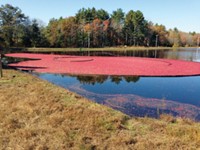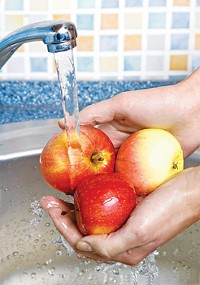Advertisement
Grab your lab coat. Let's get started
Welcome!
Welcome!
Create an account below to get 6 C&EN articles per month, receive newsletters and more - all free.
It seems this is your first time logging in online. Please enter the following information to continue.
As an ACS member you automatically get access to this site. All we need is few more details to create your reading experience.
Not you? Sign in with a different account.
Not you? Sign in with a different account.
ERROR 1
ERROR 1
ERROR 2
ERROR 2
ERROR 2
ERROR 2
ERROR 2
Password and Confirm password must match.
If you have an ACS member number, please enter it here so we can link this account to your membership. (optional)
ERROR 2
ACS values your privacy. By submitting your information, you are gaining access to C&EN and subscribing to our weekly newsletter. We use the information you provide to make your reading experience better, and we will never sell your data to third party members.
Environment
To prevent fertilizer from escaping cranberry bogs, just add salt
Aluminum sulfate traps phosphorus in sediment so it doesn’t drain from farms and pollute waterways
by Emma Hiolski
December 18, 2017
| A version of this story appeared in
Volume 95, Issue 49

Phosphorus from fertilizer can readily escape farms by hitching a ride on sediment particles suspended in water runoff. Cranberry bogs, in which farmers use water to help harvest the scarlet berries, are no different. Scientists with USDA and the University of Massachusetts Cranberry Station are working to keep phosphorus in cranberry bogs to reduce the amount of the nutrient in water and limit harmful algal blooms downstream. The team reports that aluminum sulfate treatment can trap phosphorus in the sediment of irrigation ponds and cranberry bogs, preventing it from draining away (J. Environ. Qual. 2017, DOI: 10.2134/jeq2017.04.0134). The researchers, led by Casey D. Kennedy of USDA’s Agricultural Research Service, tested the ability of various salts to remove phosphorus from pond water. Certain salts can neutralize negative charges on sediment particles, causing them to clump together and settle out of the water. This process locks residual phosphorus away so it’s unavailable to plants and algae. Lab experiments showed that aluminum sulfate, compared with iron and calcium salts, most effectively binds phosphorus at low concentrations (5 to 15 mg/L). To test the feasibility of using aluminum sulfate on cranberry farms, the scientists dispersed 15 mg/L aluminum sulfate into an irrigation pond and a former cranberry bog. Aluminum sulfate treatment worked best in the shallow waters of the former cranberry bog, removing 94% of the phosphorus from the water compared with 78% from the irrigation pond.




Join the conversation
Contact the reporter
Submit a Letter to the Editor for publication
Engage with us on Twitter